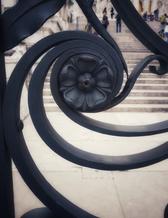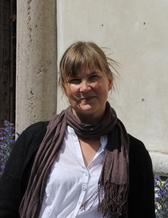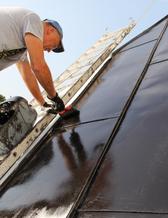Traces of our industrial heritage in iron and steel are found throughout Sweden, but many objects risk being lost without maintenance. New research from the University of Gothenburg shows how culturally important objects can be preserved and maintained in sustainable and historically relevant ways.
Railway viaducts, columns, cast-iron monuments, sheeted roofs or beautiful wrought iron fences. Our country is full of painted ferrous heritage that need to be maintained to be preserved.
"Sweden has a rich history of industrial works manufactured with different methods and materials from what is used today. I think that it is our responsibility to take care of what the previous generations have built - both from a resource and sustainability perspective and because we otherwise risk losing a part of our history and identity," says Arja Källbom, metallurgist, building conservator and traditional architectural painter, who recently defended her dissertation at the Department of Conservation at the University of Gothenburg.

Photo: Arja Källbom
Many advantages with linseed oil paints
Arja Källbom's research focuses on corrosion-prevention treatments with linseed oil varnish paints and the craft skills associated with these. The goal is to improve preservation of our historically relevant paints and craft methods, which have been lost in many places.
"It is about learning from the past to save our history. More people need to be able to manufacture and use linseed oil varnish paints. This requires a high level of skill, but it is also a smart and effective way of maintaining our industrial heritage," says Källbom, who sees many advantages with linseed oil-based paints.
"They are binders based on renewable raw materials, contain no allergy causing preservatives and age well since they neither flake nor crack. They also adhere and move very well with the underlying metal."

Wants to expand knowledge of historical materials and methods
Corrosion protection treatments with linseed oil-based paints were common in the early 1900s, but knowledge and demand gradually waned after World War II when petroleum-based paints were introduced. Today, their use is increasing, but there are still major knowledge gaps, which Arja Källbom wants to improve.
In her dissertation, she focuses particularly on aluminium-pigmented micaceous iron oxide armour paint, a type of linseed oil varnish coating that is very durable. Bodied oil varnish paints allow relatively thick layers, which is good for providing long-term corrosion prevention.
"I show how they work and age, how to mix the materials, existing requirements and how to use them to achieve the best results. My results can be used by anyone wanting to better understand the craft behind using linseed oil paints and use materials and methods that are authentic-like."

Photo: Arja Källbom
All cultural heritage is not being cared for
Today, maintenance of our ferrous industrial heritage varies. In some cases, they are not being preserved at all. In other cases, they are maintained using more modern methods, which - depending on the material and application - can lead to more damage and changes in appearance.
Källbom hopes that the tools she provides in her dissertation will contribute to preserving more industrial heritage in a more authentic and sustainable way.
"Increased knowledge of the manufacture and use of linseed oil varnish outdoor paints is also useful for preserving other types of weather-exposed objects using coatings."
Text: Ulrika Ernström






